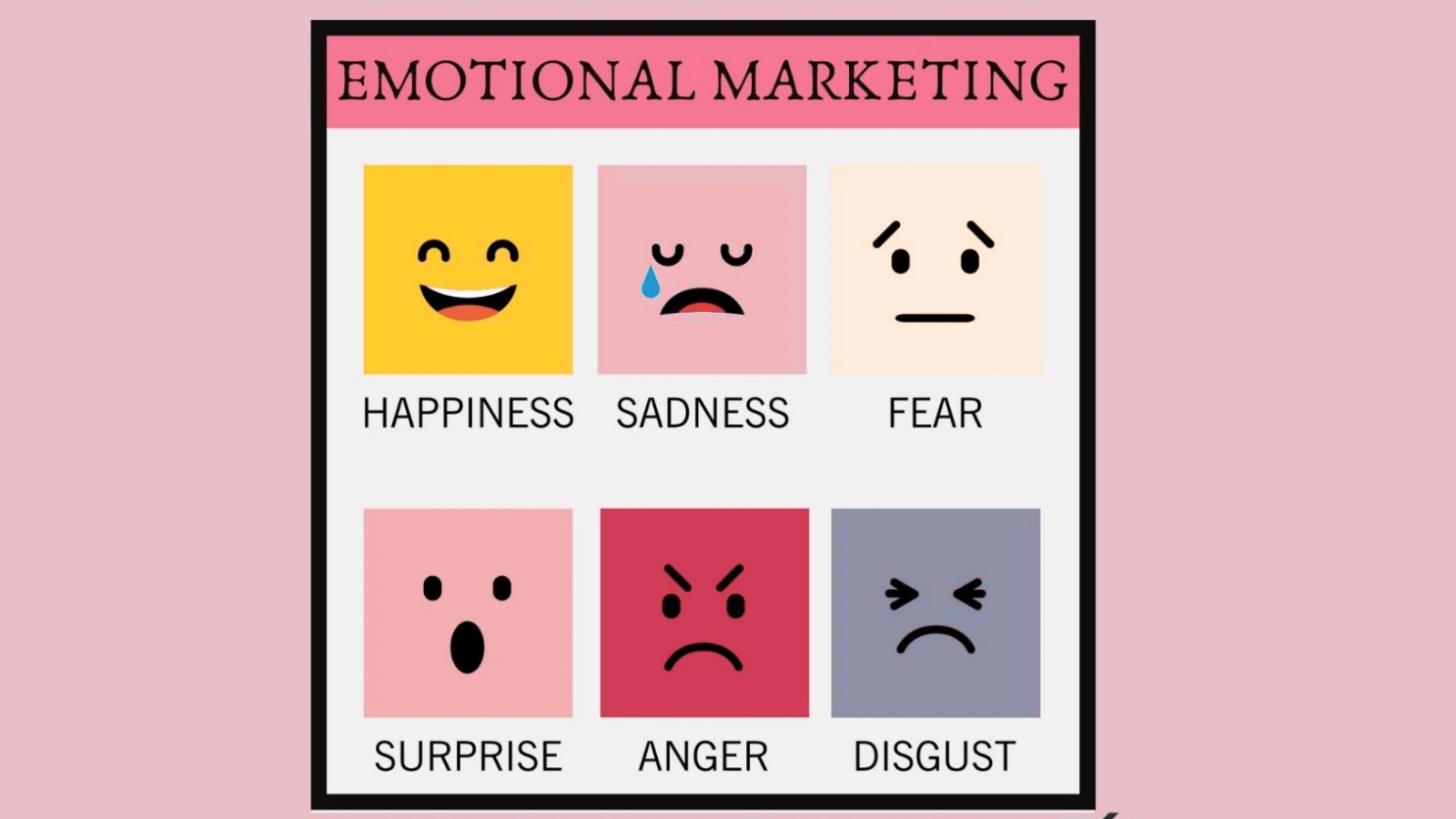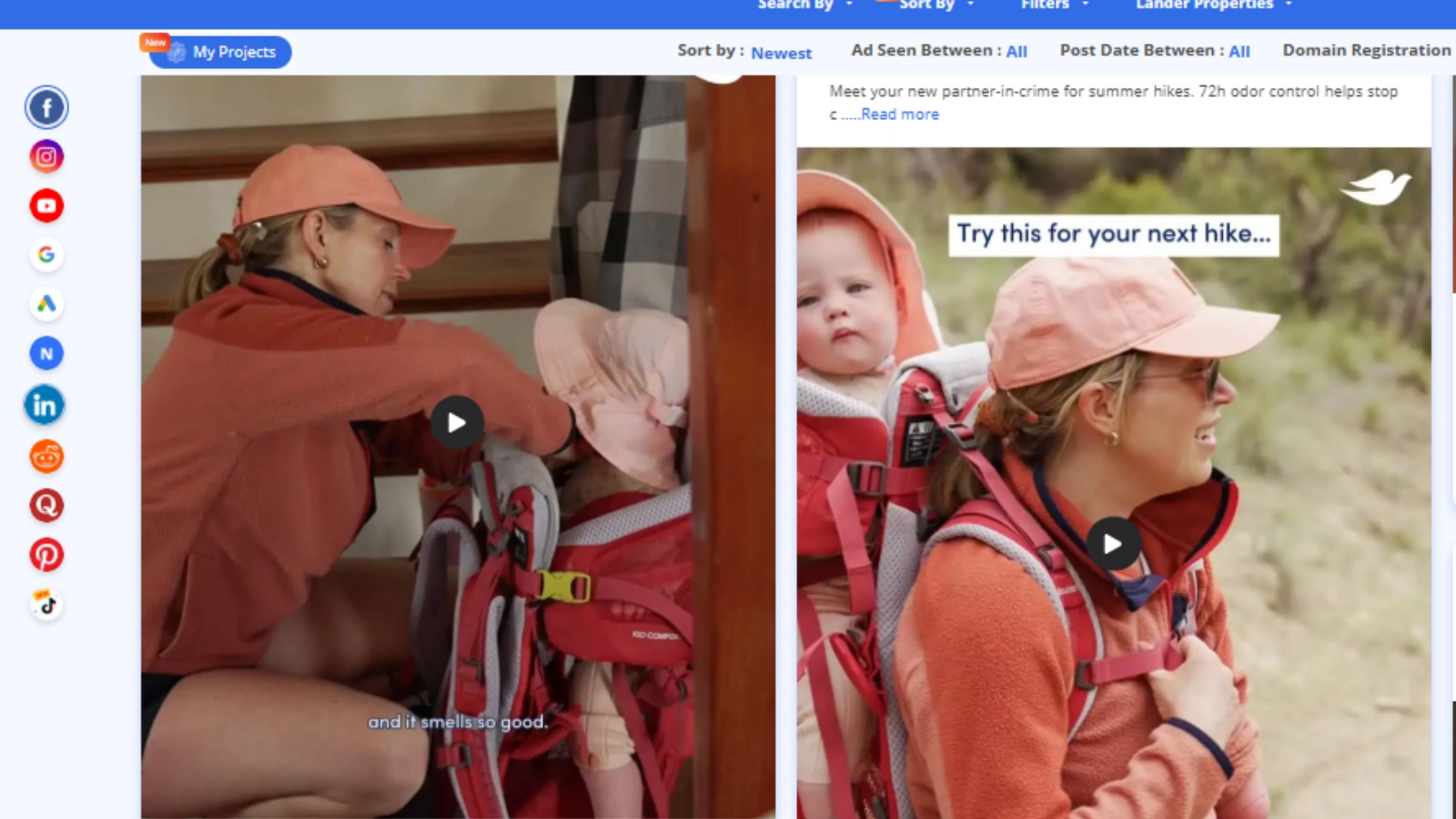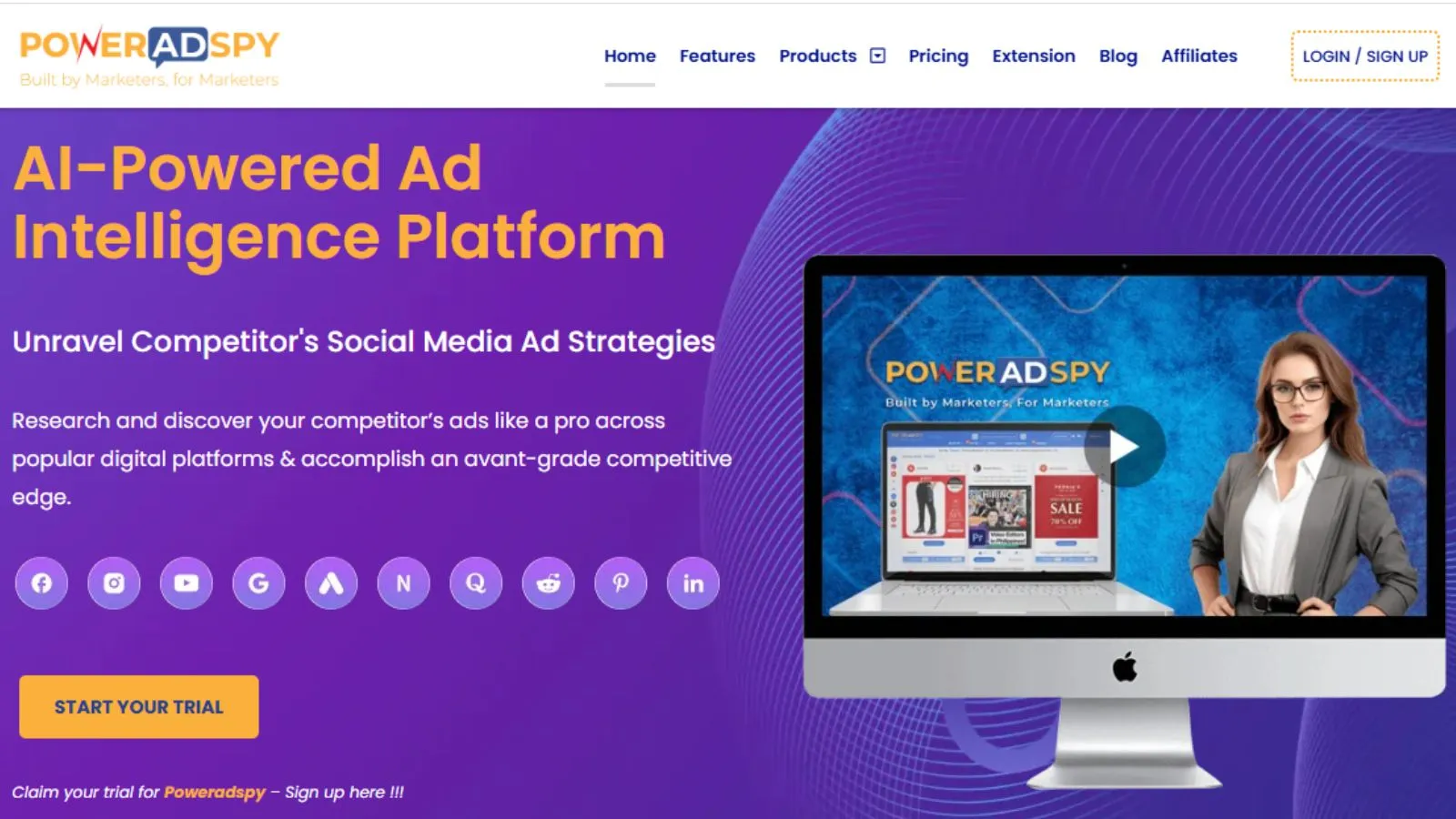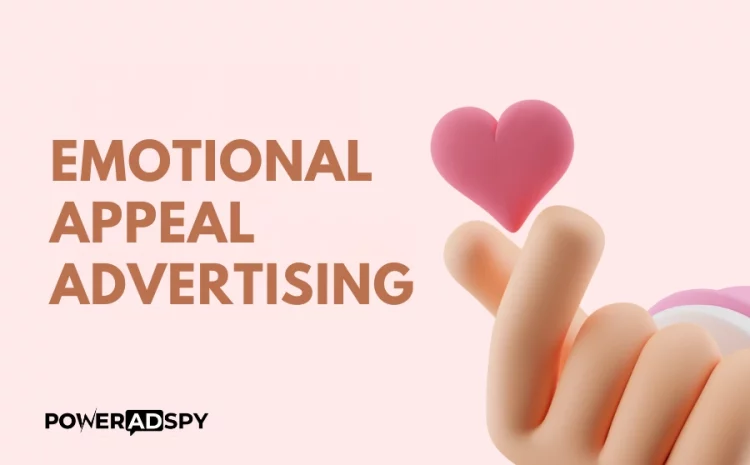What Makes Emotional Appeal Advertising So Powerful Today?
In a world where people are constantly bombarded with ads, what truly makes a message memorable isn’t just logic; it’s emotion. That’s why emotional appeal advertising has become one of the most powerful tools in a marketer’s arsenal. By tapping into core human feelings like joy, fear, love, nostalgia, anger, or guilt, brands are able to cut through the noise and create lasting impressions.
Rather than relying solely on facts or features, emotional appeal targets what truly drives people to act: their feelings. In an age of information overload and endless choices, emotional messages stand out; they make people pause, pay attention, and, most importantly, remember. In this blog, we’ll explore why this approach is more effective than ever, how leading brands are using it successfully, and tips to help you create emotionally resonant campaigns that genuinely connect with your audience.
Listen To The Podcast Now!
What Is Emotional Appeal In Advertising?
 Emotional appeal advertising is a marketing strategy that aims to influence consumers by triggering their emotions rather than relying solely on logic, facts, or technical specifications. Rather than simply highlighting the features, price, or functionality of a product, emotional advertising focuses on how the product or brand makes people feel. This approach taps into the psychology of decision-making, recognizing that emotions often guide human behavior more than rational thought.
Emotional appeal advertising is a marketing strategy that aims to influence consumers by triggering their emotions rather than relying solely on logic, facts, or technical specifications. Rather than simply highlighting the features, price, or functionality of a product, emotional advertising focuses on how the product or brand makes people feel. This approach taps into the psychology of decision-making, recognizing that emotions often guide human behavior more than rational thought.
When an advertisement evokes a strong emotional response, it creates a memorable impression in the viewer’s mind. People may not remember every detail of a product’s features, but they will remember how an ad made them feel, and that emotional memory can drive them to take action, whether it’s making a purchase, sharing the content, or developing loyalty toward the brand advertising.
Marketers use emotional appeal advertising to build connections, tell compelling stories, and inspire empathy. By creating a personal link between the brand and the consumer, emotional ads are able to influence decisions on a much deeper level than purely informational ads.
Common Emotional Triggers In Advertising Include
Happiness
An ad can evoke happiness by using cheerful imagery, light-hearted humor, inspiring stories, and feel-good moments. These elements create a joyful experience, prompting audiences to connect those positive emotions with the brand itself.
Sadness
Sadness in advertising is used through emotional storytelling, touching visuals, and empathetic scenarios that evoke compassion or concern, encouraging viewers to reflect, connect deeply with the message, and take action or support a cause.
Fear
By highlighting potential threats or negative outcomes, fear-based advertising taps into the audience’s instinct to avoid harm. It drives attention, builds urgency, and encourages people to act quickly, often by choosing a product or service as a solution.
Anger
When ads spotlight inequality, corruption, or wrongdoing, they can spark frustration and outrage. This emotional reaction pushes audiences to align with brands that take a stand, demand justice, or offer solutions to the problem being addressed.
Surprise
Unexpected twists, clever reveals, or novel experiences in ads capture attention instantly. By breaking expectations, they leave a lasting impression and make the brand feel fresh, exciting, and worth remembering.
Belonging
Showcasing shared values, community stories, or inclusive moments helps audiences feel seen and connected. These ads foster a sense of unity, making people feel they’re part of something bigger through the brand.
Nostalgia
Bringing back familiar visuals, music, or moments from the past evokes warm memories. This emotional recall creates comfort and trust, making viewers associate the brand with cherished times and feelings.
Ultimately, emotional appeal in advertising isn’t just about making people feel; it’s about making people act because of how they feel.
Why Emotional Appeal Works So Well Today?
Here are the reasons why emotional appeal works so well:
Digital Overload
People are bombarded with thousands of ads every day. Logical, information-heavy messages often get ignored. But emotional content breaks through the clutter and grabs attention. It speaks to the heart, not just the head, making your message more memorable and impactful.
Social Media Amplification
Emotional stories are more likely to be liked, commented on, and shared. Whether it’s a touching video or a funny meme, content that stirs emotion travels farther on platforms like Instagram, Facebook ad creatives, and X (formerly Twitter). One strong emotional hook can spark viral engagement.
Neuroscience-Backed Effectiveness
Scientific studies show that emotional engagement improves memory retention and decision-making. People are more likely to recall ads that made them feel something, and they’re more likely to trust and purchase from brands that stir positive emotions.
Authenticity Builds Trust
In the age of transparency, consumers value brands that feel real and human. Ads that tell authentic stories or show vulnerability can create a deep emotional bond. This kind of trust isn’t built overnight; it’s earned through emotional consistency in your messaging.
An emotionally aware society, brands that ignore the emotional layer of marketing risk being tuned out. But those that embrace it? They create a lasting impact.
Read More!
07 Ways To Create Successful Facebook Ad Creative
15 Tips To Make Emotional Appeal Advertising So Powerful Today
Here are some tips to make emotional appeal advertising powerful today:
1. Know Your Audience’s Pain Points and Desires
Effective emotional appeal advertising begins with a deep understanding of the audience. What keeps them up at night? What do they value most? When you identify their frustrations, fears, dreams, and goals, you can craft a message that resonates with them. For example, a fitness brand might focus on the emotional satisfaction of achieving body confidence rather than just losing weight. Emotional resonance starts with relevance.
2. Choose the Right Emotion That Fits Your Message
Not every product or service is suited to every emotion. Selling insurance might rely on fear and security, while promoting a luxury watch might focus on pride or success. The wrong emotional tone can confuse or alienate your audience. A good emotional ad feels aligned with both your message and your brand identity. The right emotional “fit” boosts clarity, engagement, and trust.
3. Use Storytelling, Not Just Facts
Humans are hardwired for stories; they help us process information and remember messages. Stories give your brand a voice and a soul. Rather than saying, “Our skincare cream reduces wrinkles by 30%,” tell the story of a real person whose confidence returned after using it. Include characters, emotion, and a journey. A compelling story turns a product into a personal experience.
4. Feature Real People and Real Stories
People relate to people. Using real testimonials, customer interviews, or documentary-style videos builds emotional credibility. This isn’t just about relatability, it’s about trust. When viewers see others who look and feel like them, they’re more likely to connect emotionally. For example, Dove’s “Real Beauty” campaign succeeded by showcasing real women instead of models.
5. Incorporate Music and Visuals That Evoke Emotion
A soundtrack can make or break the emotional impact of an ad. Just think about how a soft piano track can make you tear up, or how upbeat music adds excitement. Combine that with thoughtful visual lighting, colors, and facial expressions to create a full sensory experience. Emotionally engaging media doesn’t always need words. A good combination of sound and visuals can carry a story on its own.
6. Use Powerful, Emotionally Charged Words
Words like “unbreakable,” “devastating,” “transformational,” or “heartwarming” can stir immediate feelings. Don’t just describe, evoke. Even in short-form copy like social ads or taglines, strong emotional vocabulary draws attention and keeps readers hooked. Combine emotional adjectives with action-oriented verbs to push for a response.
7. Evoke Empathy Through Situations People Relate To
Empathy is one of the strongest emotional connectors. Show people facing challenges your audience understands being a new parent, dealing with loss, and fighting for a goal. When your audience sees their own story reflected, they feel understood. This connection builds both trust and a deeper emotional pull toward your message or product.
8. Create Suspense or Tension
Tension keeps viewers glued to your content. Start your story with a mystery, a struggle, or a question. Delay the resolution slightly to build curiosity. When used well, suspense strengthens emotional investment and makes the payoff more satisfying. Think of those emotional YouTube ads that slowly reveal a twist ending, you stay because you have to know what happens.
9. Show Transformation From Struggle to Success
People are inspired by change. Showing someone’s journey from hardship to victory motivates viewers and stirs feelings of hope and admiration. Whether it’s a startup founder overcoming failure or a patient regaining health, transformation is a timeless emotional hook. Highlight the “before and after,” and position your product or service as the catalyst.
10. Use Nostalgia to Spark Memories
Nostalgia taps into fond memories and feelings of comfort and familiarity. It’s especially effective with older demographics who associate certain brands, music, or visuals with their youth. Retro colors, references, or jingles can make people feel like they’re revisiting a beloved chapter of life, drawing positive associations with your brand.
11. Inspire With Messages of Hope and Unity
In times of uncertainty or division, messages that bring people together are deeply powerful. Highlight kindness, perseverance, community, or shared human values. Brands that inspire hope, especially during difficult times, are seen as compassionate and trustworthy. A great example is Coca-Cola’s campaigns about global unity and shared happiness.
12. Leverage Emotional Branding: Make Your Brand Stand for Something
Consumers don’t just buy products, they buy what brands stand for. Emotional branding connects your business to values and causes that matter. Are you about empowerment? Sustainability? Equality? Purpose-driven branding creates emotional loyalty beyond the product. When people align with your beliefs, they become long-term advocates.
13. Include Testimonials or UGC With Emotional Weight
User-generated content and heartfelt reviews can be more persuasive than any polished commercial. Highlight emotional experiences: “This service saved my business,” or “Using this app helped me reconnect with my dad.” When viewers see honest, emotional content from real people, it builds credibility and increases emotional relatability.
14. Don’t Overdo It. Authenticity Is Key
Audiences today are savvy. Over-the-top emotion or manipulation can feel insincere and damage your brand’s reputation. Keep your tone natural and your message grounded. Use emotion to connect, not to exploit. Aim for honesty and integrity, even in emotionally intense content. The best emotional ads feel real, not scripted or exaggerated.
15. Test and Measure Emotional Response Through A/B Testing or Sentiment Analysis
Different emotional tones trigger different outcomes. Run A/B tests with different emotional appeals, joy vs. urgency, nostalgia vs. inspiration, and measure how each version performs. Sentiment analysis tools can help you monitor how audiences are reacting emotionally on social media or in comments. Use this data to refine and improve future campaigns.
Read More!
How To Choose The Right Advertising Techniques For Your Brand?
Brand Advertisement: What Is It and How Does It Work?
Emotional Appeal Advertising Examples
Here we will go through the ads with emotional appeal in advertising examples:
1. Nike “You Can’t Stop Us”
This ad is a masterclass in emotional storytelling through visual power and rhythm. It features a seamless split-screen montage of athletes from diverse backgrounds overcoming obstacles, injuries, discrimination, and the pandemic. The message centers around resilience, unity, and the unbreakable human spirit. It stirs feelings of hope, strength, and togetherness, showing that sports and people can’t be stopped by setbacks. Nike emotionally aligns itself with perseverance and inclusivity.
2. Google “Loretta” (Super Bowl Ad)
In this quiet but powerful ad, an elderly man uses Google Assistant to remember tender details about his late wife, Loretta, her laugh, her favorite movie, and her quirks. The simple interface combined with heartfelt memories creates a deeply emotional experience. Viewers are reminded of love, loss, and the small moments that matter most. The Google ad reinforces the value not just as a tech tool but as a companion in preserving life’s most meaningful stories.
3. Dove “Real Beauty Sketches”
This campaign dives into self-esteem and body image by showing how women see themselves versus how others see them. A forensic sketch artist draws women based on their descriptions and then again based on a stranger’s description. The difference is striking; women often underestimate their beauty. The emotional takeaway encourages self-love and challenges societal beauty norms. Dove’s message is empowering, promoting authenticity and confidence.
4. P&G “Thank You, Mom” Campaign
Launched during the Olympics, this campaign highlights the behind-the-scenes role of mothers in shaping champions. Through emotional vignettes, it shows the sacrifices, encouragement, and strength of mothers supporting their children through challenges. It evokes gratitude, admiration, and warmth. The campaign doesn’t sell a product directly; it sells a feeling of appreciation, positioning P&G as a brand that understands family, love, and dedication.
These are a few emotional appeals in advertising examples that we saw:
How PowerAdSpy Helps In Emotional Appeal In Advertising
PowerAdSpy is an ad intelligence software or ads spy tool that helps you spy on top-performing emotional ads across platforms like Facebook, Instagram, YouTube, and more.
Here’s how it supports emotional appeal:
Ad Filter by Emotion-Based Keywords:
This feature allows you to easily filter ads based on specific emotional words like “love,” “fear,” or “hope.” It helps you quickly find ads designed to evoke certain feelings, making it easier to target emotional marketing strategies.
Video Ad Search
With this, you can discover video ads that use emotional storytelling and show advertising techniques to create a strong connection with viewers. These videos often combine visuals, music, and narrative to convey feelings and engage the audience deeply and effectively.
Competitor Insights
You get a clear view of the emotional ads your competitors are running, along with data on their performance. This insight helps you understand which emotional appeals are working in your industry and how to position your ads.
Engagement Tracking
This tool tracks which ads receive the most shares, reactions, and comments, often a sign of strong emotional impact. By analyzing this engagement, you can determine what type of emotional content resonates most effectively with the audience.
Ad Copy Inspiration
Here, you can analyze the emotional hooks and storytelling styles used by leading brands in their ad copy. This helps you craft compelling messages that connect emotionally with your target audience and improve your ad effectiveness.
Conclusion
Emotional appeal advertising remains one of the most powerful tools marketers have to connect deeply with their audience. By tapping into universal feelings such as joy, fear, love, or nostalgia, brands can cut through the noise, foster trust, and inspire action.
Today’s landscape, where consumers are bombarded with information, emotionally driven ads stand out by creating memorable and meaningful experiences. Combining creativity with data-driven insights like those from ad spy tools such as PowerAdSpy helps brands craft authentic stories that resonate and build long-term loyalty. When done right, emotional appeal advertising doesn’t just sell products; it builds lasting relationships between brands and people.
FAQs
Q1: What exactly is emotional appeal advertising?
Emotional appeal advertising is a marketing strategy that targets the audience’s feelings rather than relying solely on facts or features. It aims to evoke emotions like happiness, fear, or nostalgia to motivate consumers to engage, buy, or support a brand.
Q2: Why is emotional appeal so effective in advertising?
Emotions strongly influence decision-making and memory. Ads that evoke genuine feelings create stronger connections, increase brand recall, and encourage sharing, which ultimately drives better engagement and sales.
Q3: What are some common emotions used in emotional advertising?
Common emotions include happiness, sadness, fear, anger, surprise, belonging, and nostalgia. Each emotion can be strategically used depending on the brand message and target audience.
Q4: How can I measure the success of emotional appeal ads?
Success can be measured through engagement metrics such as likes, shares, comments, and click-through rates. Sentiment analysis and customer feedback also help gauge emotional resonance.






